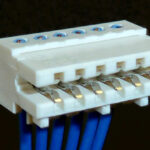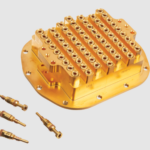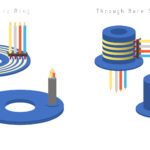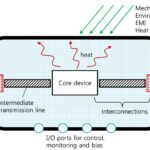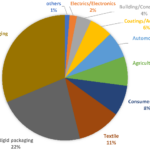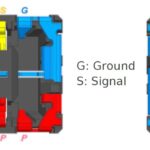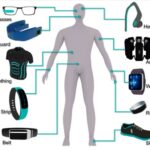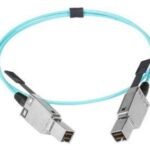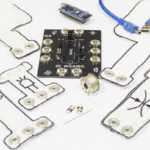RAST connectors include signal and power designs based on insulation displacement technology. The original specification included a maximum of 12 contacts, but RAST connectors are currently available with 20 or more contacts. They were developed for consumer white goods and have been adopted by various applications, including automotive systems. The RAST connector system was designed […]
What’s special about connectors in quantum computers?
Quantum computers are expected to solve some of the world’s most complex problems. Fabricating interconnects is one of the most complex problems when building quantum computers. Quantum computers need connectors that can withstand cryogenic temperatures, with non-magnetic construction, that operate at microwave frequencies with low losses to reduce heating and improve data transfer. High-density hermetically […]
Rotary slip ring connectors — what are they used for?
Rotary slip ring connectors are important components in various applications like multi-axis robots in industry 4.0, wind turbines for sustainable green energy, machine tools, medical systems, and more. This FAQ considers how slip ring connectors differ from commutators, and how mercury-wetted, pancake, and wireless slip ring connectors work, their capabilities, and reviews applications where they […]
Where are liquid-cooled connectors and connectors for liquid cooling used in EVs?
Liquid-cooled connectors are used for carrying high power levels like those found in extreme fast charging (XFC) EV chargers. Connectors for liquid cooling are more common and used for cooling EV battery packs, cooling XFC EV charging stations, and other thermally demanding applications. This FAQ reviews the performance and use cases for liquid-cooled connectors and […]
How are terahertz connectors different?
Terahertz (THz) systems represent one of the next frontiers in electronics. THz applications are expected to include automotive advanced driver assistance systems (ADAS) for autonomous vehicles, next-generation telephony like 5G and 6G, augmented and virtual reality (AR & VR) technologies for the metaverse, and more. There will be numerous challenges to overcome in the development […]
How can connector sustainability be improved?
Before it became fashionable, connector makers were at the forefront of sustainability. It started with replacing cadmium plating to meet RoHS requirements and soon expanded to using plastic regrinds and bio-based plastics instead of 100% new plastics for connector bodies. Connector makers have more recently embraced new, more sustainable materials for high-performance contacts. This FAQ […]
How are RF connectors shrinking for mmWave systems?
RF connectors for mmWave are shrinking to accommodate higher performance and higher densities in 5G communication networks and devices. This FAQ begins by looking at today’s 4.3-10 coaxial connectors, which were developed to solve the performance issues inherent to the previous 7-16 connectors. It then examines how the technologies unveiled in the 4.3-10 are further […]
Where are miniature connectors for wearables headed?
Miniature connectors for wearables continue to shrink, and they are increasing in performance, carrying higher bandwidth signals and more power. Wearables add functionality, resulting in more components and interconnects in the same size package. Applications range from smartwatches and health monitoring devices to augmented reality/virtual reality (AR/VR) devices, as well as medical and military systems. […]
How are optical interconnects being miniaturized?
Fiber optic connector trends include a proliferation of new and smaller designs and, according to NTT, optical connector standardization activities are one of the most active areas at the International Electrotechnical Commission (IEC). As of February 2021, IEC SC 86B (Fibre optic interconnecting devices and passive components) published the second largest number of documents in […]
What connectors are there for woven electronics & e-textiles?
Woven electronics and electronic textiles (e-textiles) are emerging areas of technology. E-textiles are being developed that can monitor physiological conditions, deliver medical treatments, or be used as human machine interfaces (HMIs). Maintaining reliable connections between electronic devices embedded into clothing or other soft materials is challenging. There are issues related to washability and durability, in […]

